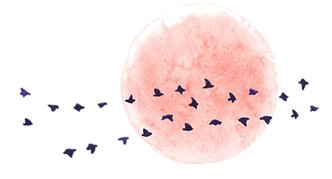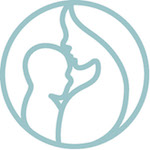Positive Body Awareness
Andrew Cook MSc RCST
Transformational Bodywork
 Mums and babies (detailed information)
Mums and babies (detailed information)

Possible areas where CST may help during pregnancy ...
- Fertility (I work in the Norwich Natural Fertility Partnership team)
- Morning sickness, pubic symphysis pain, back pain and almost any other form of discomfort during any stage of pregnancy. Treatments are safe, gentle, respectful (I would normally prefer skin contact on "the bump" but this is not absolutely necessary, and otherwise you can remain fully dressed). You can come for treatment at any time during pregnancy.
Possible areas where CST may help after giving birth ...
- Optimising and speeding up postnatal recovery for the mother. This is particularly important, since the baby is minutely aware of the condition of the mother in the weeks immediately following birth. If you are comfortable and have fully recovered, the baby will feel that you are 100% and so will be far easier to settle. I can particularly help mastitis and any operation scars to heal, as part of my specialisation in adhesions and scar tissue.
- Any signs of unconsolable distress (including baby colic) & feeding problems, sleeplessness, and baby reflux.
- Floppy and generally unresponsive babies, or where the baby does not initiate eye contact.
- A range of other issues, including plagiocephaly (flat head) and glue-ear.
Treatment during pregnancy
I find that many cases of discomfort and back pain during pregnancy are caused by minor restrictions to mobility of the internal organs - and it is usually possible to help relieve these quite easily using CST techniques. If there is no history of IBS or endometriosis, then in my experience, often just one or two treatments are enough to relieve pain and help the bump to feel far more comfortable for the remainder of the pregnancy. In more complex cases, often some relaxation and increase in comfort is possible fairly quickly.
Symphysis Pubis Disorder (SPD) is a particularly painful condition that occurs in a small number of pregnancies, and in my experience, this also can often be helped quite easily.
...often just one or two treatments are enough to relieve pain and help the bump to feel far more comfortable...
Other practitioners at the clinics I work from also have substantial experience and expertise in helping with pregnancy, including a fertility service, acupuncture, and homoeopathic treatments.
Turning the baby
If the baby is not turning into the correct position, sometimes CST can help this - again this is a non-invasive and gentle approach. Within a certain time frame (30-36 weeks), application of Moxa by a qualified Acupuncturist (Kate McDougall in our clinic is very helpful!) is particularly effective - with up to 70% success found in clinical trials.
New Mums - the first few weeks & months

Most pregnancies go remarkably well, and you will feel fine. For the relatively small number of mums who had difficult labours, or who had stitches or a cesarean section, or whose innards have refused to come back to their normal position, CST is pretty good at helping return the body to being comfortable and pleasant to live in.
The more resourced and comfortable you feel in yourself, the more easily the baby will settle
If you are feeling uncomfortable, it is better to do something that will help you be more comfortable (rather than just putting up with it and assuming that this is some necessary and unavoidable part of giving birth). Because then you will be more able to focus on being with (and enjoying!) the baby. If your experience is that you are just about "coping" (or maybe not coping), then that is a clear indication that some treatment would be very useful. The more resourced you feel in yourself, the more easily the baby will settle., So rule number 1 for any new parent is - do whatever it takes to make yourself feel OK and meet your own needs.
C-sections etc
I find that scar tissue is surprisingly easy to make comfortable, and cesarian stitching can be safely treated to speed recovery and improve comfort within a week. If you consider that someone has stitched half a dozen layers of complex tissue up with a large darning needle, and unless you're lucky enough to get a particularly skilled embroiderer, there are bound to be some rucks, twists and stretches. What I have found applying CST to post-op scars for the past 20 years is - if the correct (safe) type of pressure is applied, the scar appears to become more even and soft and comfortable over just a few tens of minutes. Episiotomies and perineal tearing are often easily helped through working with the stomach muscles just above the pubis, as can SPDs, displaced coccyx and sciatica. Note that none of this requires internal contact, so it is comfortable and dignified.
Mastitis
If you have mastitis, then I can show you how to relieve that yourself very easily, and in most cases this works within just in a few minutes. About half of mastitis cases are simple local lymph drainage, and so will not need any further treatment. Sore and bleeding nipples from feeding the baby are NOT normal and are caused by a problem with the baby's feeding reflex - see below.
Confidence and coping...
Holding a distressed baby is really not easy. I count myself lucky that I get to enjoy a baby for an hour, I don't have to change any nappies, and then they go home. As parents, it's rather different, because you have to handle whatever happens for 24/7. New babies - as well as being eating pooing sleeping machines are emotional feedback machines. If you feel truly happy, content and steady, then the baby will be more likely to be content. If you feel anxious, overwhelmed, distressed, angry, or any other difficult emotion, the baby will sense that and will be far more edgy and far more likely to start screaming. This truly is not easy, and many parents at some point will experience this emotional feedback and have a screaming inconsolable baby whilst they feel like the world's worst parent for not being able to deal with the crying and for not being able to soothe the baby. The fact is - most parents experience this at some time. Having helped new parents for over 20 years now, I can teach some basic skills which substantially reduce this feedback loop! Many parents notice these relationships between their own mood and that of the baby, and CST is one way to make positive use of that deep and instinctive relationship between baby and parents.
You might also be interested in The Evolved Nest - a resource for parenting based on how it was done when our nervous system evolved over a couple of million years as we lived in small nomadic hunter-gatherer groups.
Babies - the first few weeks & months

The best thing you can do for ANY baby - healthy or not - but particularly when things are not quite right - is to give it lots of skin contact, by being as resourced yourself as possible (see General comments below), and also talking to them reassuringly. Some babies have recovered from conditions that doctors thought were impossible just by having simple skin contact.
Eye contact
If your baby has good eye contact and is alert and moves easily and symmetrically, then regardless of anything else that is going on, it is probably at least 99.99% healthy. That doesn't mean to say that anything else is trivial or shouldn't be followed up, but it does mean that most things don't need to be worried about, which is quite a relief.
If your baby is so "good" that it just sleeps all the time and still makes little eye contact at three or four weeks, it is not "good". A baby showing these signs is in shock. From my point of view this is the most important category that needs treatment, and a Cranial practitioner would be able to help this. When the baby starts to wake up from this shock, it may start to scream a lot. Although you will then (temporarily) have a "difficult" baby, the crying is at least a sign that it has come more alive.
Colic
...from a Cranial point of view, there are four or five major causes of colic, and most of these respond fairly easily and quickly to treatment
Baby Colic is one of the most difficult things to handle for parents. The medical definition of Colic is just "Unconsolable Crying" for more than a few hours a day. That means - there is no medical consensus as to what might cause colic. About 80% of cases of colic stop miraculously at 3 months, so the usual medical advice is Calpol (baby knock-out drops) and "ride it out". It's usually possible to identify parents who have extremely colicky babies when they walk in the clinic because they often have difficulty relating to this screaming monster that has appeared in their lives, and look like they have not slept for 2 weeks (which may be true). In Cranial differential diagnosis there are maybe four or five major possible causes of colic, most are fairly easy to treat, and the aim is always to get in as much treatment as possible early on so that the parents can sleep and have relatively normal lives again. I would say that over 50% of colic cases I have seen have reduced to manageable levels within 2-3 treatments, and over 90% reduced substantially before the usual 3 month cutoff.
Some colic is purely due to difficulty absorbing milk, with resultant stomach cramps a predictable time after each feed. Sometimes it is possible to identify a specific milk formula which does not cause these colicky gut cramps. Or if breastfeeding, particular foods may be causing a digestive reaction.
Stiff necks and sore nipples
If your baby cannot turn its head at least 80-90 degrees equally to both left and right, then it probably has a jammed Cranial base (i.e. the top of its neck is locked up, usually more on one side). Although some babies just have stiff necks and are otherwise happy, some have considerable pain coming from the neck (and so cry a lot), some find feeding difficult on one side (if the neck cannot turn to the left, then the right breast is harder to feed on), some are very windy and have difficulty digesting (and scream when they are trying to process food), etc etc due to a nerve that runs the upper digestive tract being squeezed (the Vagus Cranial Nerve). This is the most common cause of most baby ailments (including reflux), and it usually resolves easily in a few CST treatments. A compressed neck may also associated with other feeding difficulties where the tongue does not move correctly (e.g. chewing, which results in sore nipples). So if you are breast-feeding and it is painful, please be aware that this pain is not necessary - and treatment for the baby will probably make both of your lives a lot easier.
I often treat babies when they are being fed, because this is the easiest way to make sure they don't move their heads around during the treatment. In many cases, when the base of the skull has been released so it can move freely relative to the neck, the tongue movement often improves as the hypoglossal and glossopharyngeal nerves are released, and the mum will immediately notice a change in the baby's suckling.
Reflux and grumpy babies
Many things that can make a baby uncomfortable occur in the last few weeks and days (or hours) before birth. One common pattern I see is babies who cannot straighten up - they are often grumpy and miserable, and sit half folded over like they are already over 90 years old. In these cases, the baby has been compressed during contractions - sometimes because the waters broke quite early - and their diaphragm is in spasm. Not only are they uncomfortable, but often have reflux. Crunchy babies usually straighten out visibly in the first two or three treatment sessions.
Plagiocephaly (flat or mis-shapen heads)
This condition has become more common as parents have been frightened into laying their babies on their backs - a position that was never considered until just a few years ago. It is useful to know that if you do not smoke or drink heavily (and I would add, if the house does not have black mold), you are in an extremely low risk group for cot death. The baby tends to roll onto the flat area when sleeping. This and other sources of pressure (such as car seats that have a head rest too far forwards - that force the baby's head forwards) - may all prevent the head self-correcting.
If your baby's head starts to show signs of flattening or an increase in flattening, it is well worth considering some CST treatments to help reduce this tendency. Upper neck stiffness and associated colic and/or nipple chewing (see above) often goes hand-in-hand with flattening. There are also breathable pillows available in shops that supply baby products.




<< ¦ Top ¦ Menu ¦ Front page ¦ Body-Mind ¦ CST/Clinic ¦ Contact ¦ Site Map ¦ Search
all content © Andrew Cook, Norwich UK, 2021



